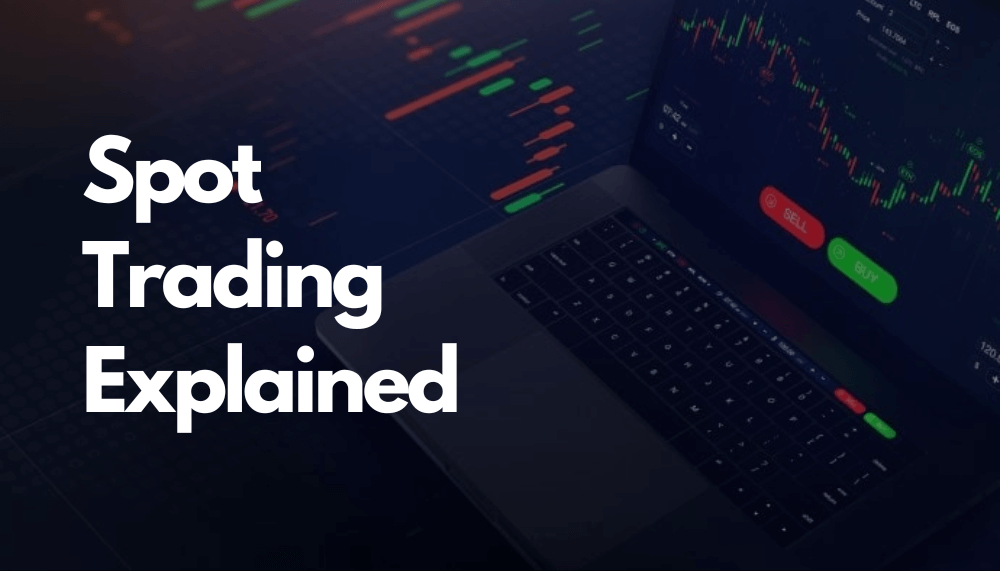Spot trading, or a spot transaction, is a terminology that occurs when a trader buys or sells a financial instrument, commodity, or foreign currency on an open date when delivery may happen within two days. It typically involves the actual delivery of the currency or commodity traded.
Spot trading considers the current price of the asset, influenced by factors like maturity dates and interest rates. The rate at which one currency could be traded for another in the foreign exchange marketplace on a spot basis is known as the spot exchange rate. Spot trading is very different from futures or forward trading, which takes a spot exchange to be executed at a predetermined date in the future.
Understanding Spot Trading
Foreign exchange spot contracts are the most heavily traded type and settle in two business days, whereas most other financial instruments settle the next business day. The spot foreign exchange, or simply ‘forex’, markets trade electronically around the globe, making it the world’s largest market, with over $7.55 trillion traded daily, dwarfing the size of both interest rate and commodity markets.
The ongoing price of a financial instrument is called the spot price, which represents the immediate selling or buying price. Buyers and sellers determine the spot price through their posted buy and sell orders. In highly active markets, the spot price can fluctuate by a second as orders are quickly fulfilled and new ones are placed.
How Spot Trades Work?
The most frequently traded spot deals are foreign exchange spot contracts, usually settled within two business days. Many financial instruments are settled the next business day.
The forex markets also referred to as ‘spot foreign exchange markets,’ are traded electronically globally. It’s the largest market worldwide accounting for over $5 million trades daily. In comparison, interest rates and commodity markets are much smaller.
The present price at which you can purchase or sell a financial instrument is known as its spot price. This price is determined once the seller and buyer place their orders. Orders are filled immediately when new ones enter the marketplace, so spot prices in liquid markets change every second. Bonds, options, and most other interest-rate instruments are also traded for next-day spot settlement.
A spot trading contract is an agreement between a company and a financial institution or between two financial institutions. In interest rate swaps, the near-term leg usually settles on the spot date, typically within two trading days. Additionally, commodities are traded on exchanges, with the most common ones traded on the CME Group and the New York Stock Exchange.
Types of Spot Markets
The spot markets can be divided into two types: over-the-counter and market exchanges.
- Over-the-counter (OTC): This place is where trade directly happens between buyers and sellers connect. No interference of central exchange or third party is involved to supervise the transactions.
- Market Exchanges: These places are centralized where buyers and sellers form unity to trade financial instruments and commodities. Trading is conducted either via an electronic platform or a physical trading floor.
Why do people trade Spot Market?
People are drawn to spot markets for several reasons:
- You can trade instantly with real-time pricing.
- Spot prices accurately reflect the current market conditions.
- Some of the lowest spreads in the UK, starting at just 0.3 points, are available.
- There are no fixed expiries on spot positions, offering flexibility.
- Continuous charting is available, which is great for technical analysis.
- It’s perfect for short-term trading as the positions don’t conclude.
- You have the option to trade with leverage and margin. This will enhance your profits but will also cause an increase in your potential losses.
What should be considered in Spot Trading?
Two things should be considered in Spot Trading:
- Forward Pricing: Forward pricing is the process that involves fixing prices for financial instruments that will be settled at a future date, instead of immediately. This involves the consideration of the current spot price along with interest costs up till the settlement date.
- Other Spot Markets: In other spot markets, such as bonds and options, the settlement usually happens on the next business day. These contracts are often made between financial institutions but can also include companies. For example, an interest rate swap with a near-term leg for the spot date generally settles within two business days.
Conclusion
In conclusion, the spot market is the marketplace in which financial instruments are sold for delivery at an immediate point in time. The value of the assets traded on this market is determined both by its current value termed as the spot price and also by the expected future value termed as the forward price. Such trades could occur directly between buyers and sellers without middlemen or through public exchanges like NYSE.

